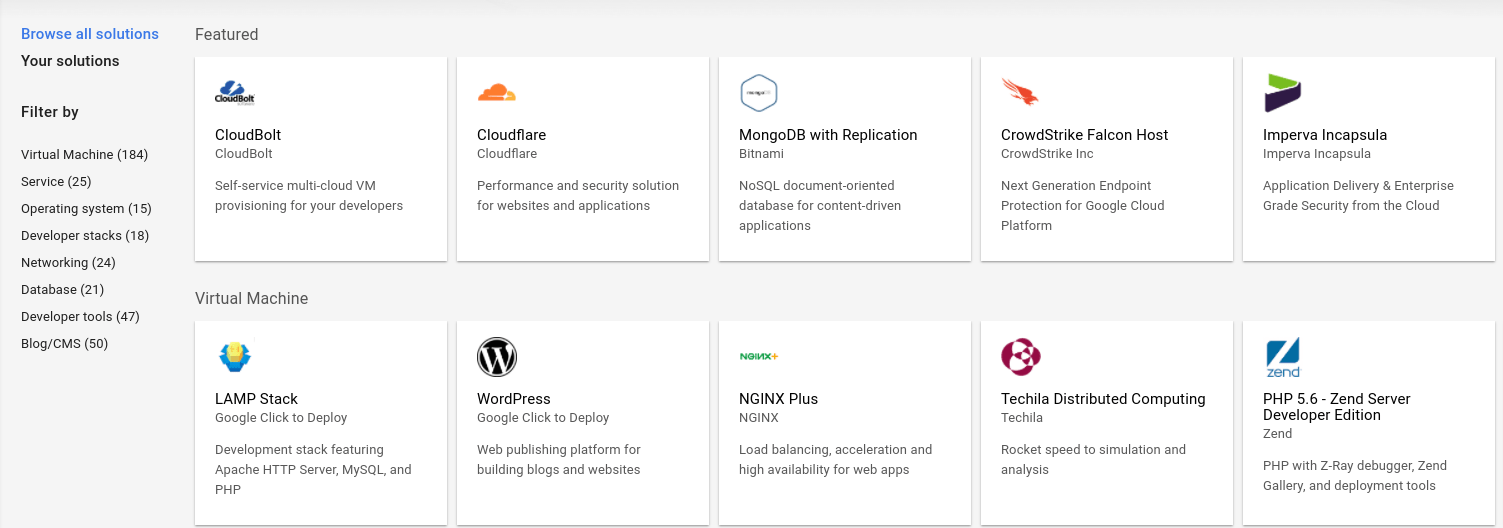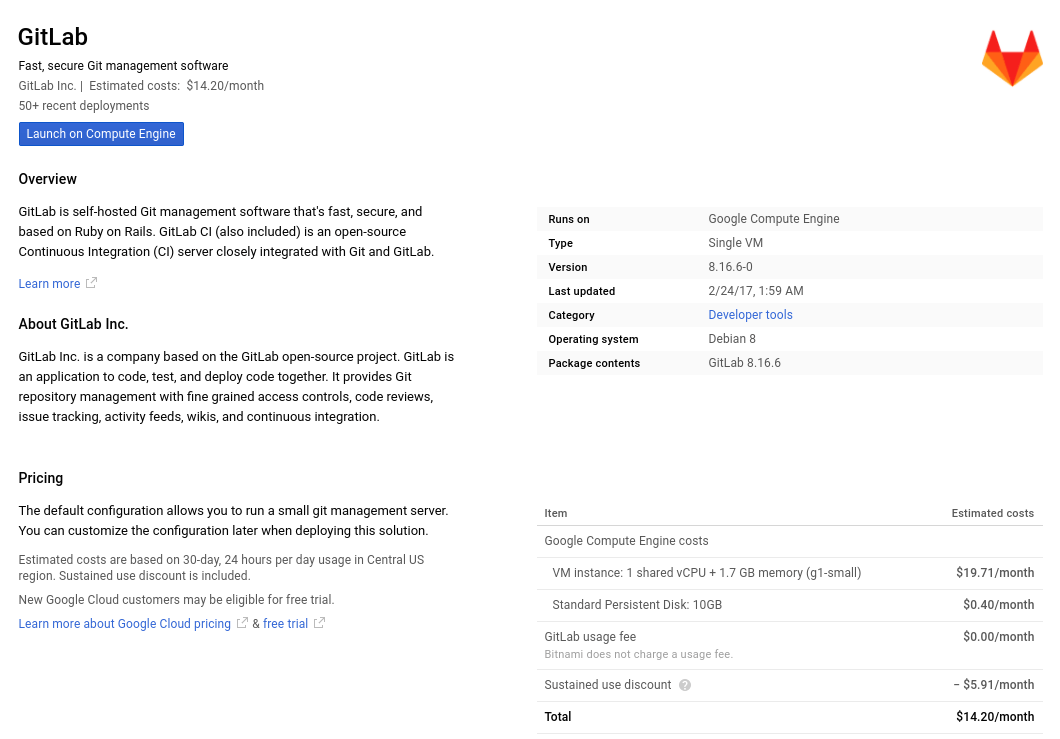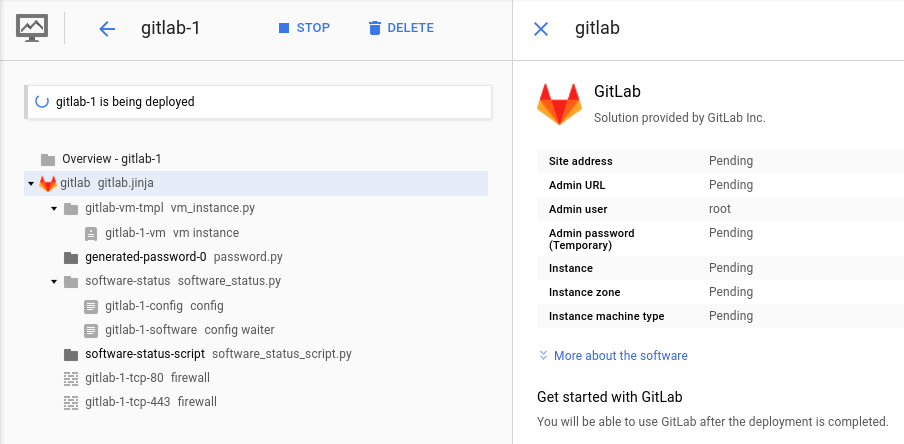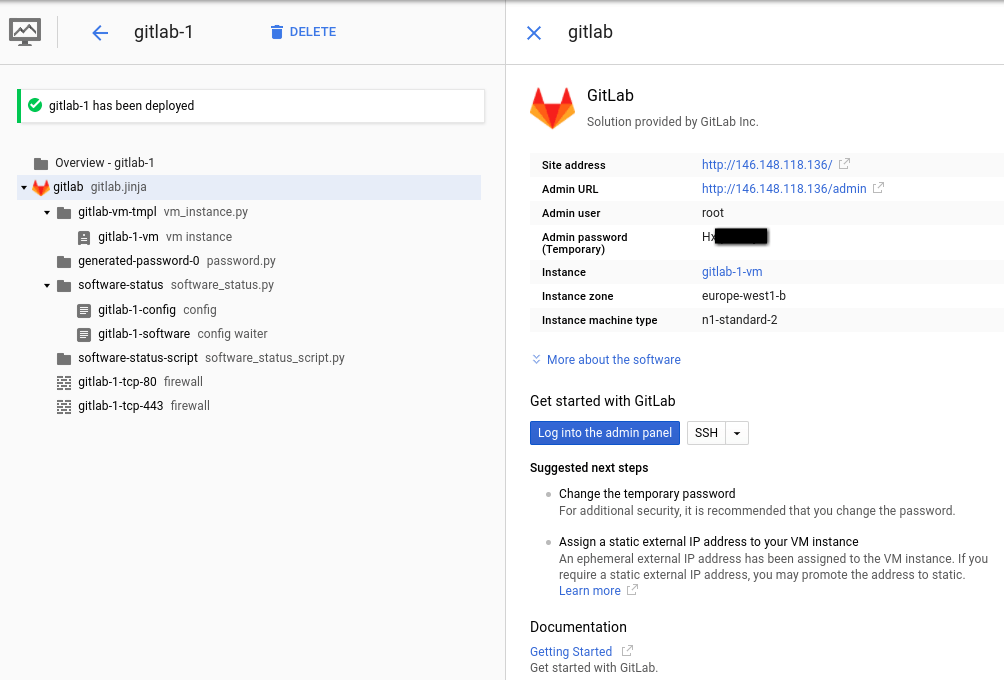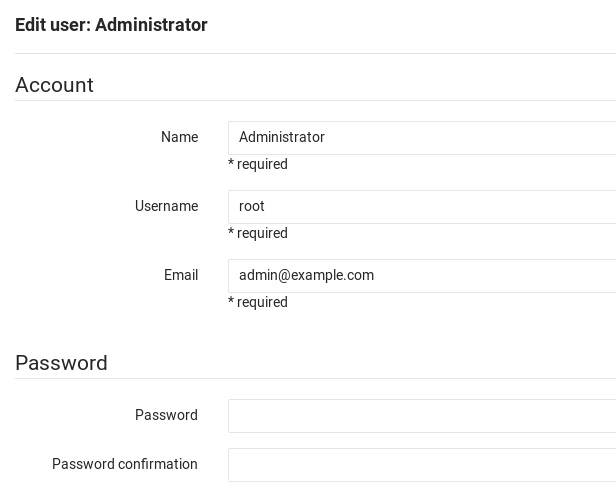Installing GitLab on Google Cloud Platform
The fastest way to get started on Google Cloud Platform (GCP) is through the Google Cloud Launcher program.
GitLab's official Google Launcher apps:
Prerequisites
There are only two prerequisites in order to install GitLab on GCP:
- You need to have a Google account.
- You need to sign up for the GCP program. If this is your first time, Google gives you $300 credit for free to consume over a 60-day period.
Once you have performed those two steps, you can visit the GCP launcher console which has a list of all the things you can deploy on GCP.
The next step is to find and install GitLab.
Configuring and deploying the VM
To deploy GitLab on GCP you need to follow five simple steps:
- Go to https://cloud.google.com/launcher and login with your Google credentials
-
Search for GitLab from GitLab Inc. (not the same as Bitnami) and click on the tile.
-
In the next page, you can see an overview of the GitLab VM as well as some estimated costs. Click the Launch on Compute Engine button to choose the hardware and network settings.
-
In the settings page you can choose things like the datacenter where your GitLab server will be hosted, the number of CPUs and amount of RAM, the disk size and type, etc. Read GitLab's requirements documentation for more details on what to choose depending on your needs.
-
As a last step, hit Deploy when ready. The process will finish in a few seconds.
Visiting GitLab for the first time
After a few seconds, GitLab will be successfully deployed and you should be able to see the IP address that Google assigned to the VM, as well as the credentials to the GitLab admin account.
- Click on the IP under Site address to visit GitLab.
- Accept the self-signed certificate that Google automatically deployed in order to securely reach GitLab's login page.
-
Use the username and password that are present in the Google console page to login into GitLab and click Sign in.
Congratulations! GitLab is now installed and you can access it via your browser, but we're not done yet. There are some steps you need to take in order to have a fully functional GitLab installation.
Next steps
These are the most important next steps to take after you installed GitLab for the first time.
Changing the admin password and email
Google assigned a random password for the GitLab admin account and you should change it ASAP:
- Visit the GitLab admin page through the link in the Google console under Admin URL.
- Find the Administrator user under the Users page and hit Edit.
-
Change the email address to a real one and enter a new password.
Hit Save changes for the changes to take effect.
After changing the password, you will be signed out from GitLab. Use the new credentials to login again.
Assigning a static IP
By default, Google assigns an ephemeral IP to your instance. It is strongly recommended to assign a static IP if you are going to use GitLab in production and use a domain name as we'll see below.
Read Google's documentation on how to promote an ephemeral IP address.
Using a domain name
Assuming you have a domain name in your possession and you have correctly set up DNS to point to the static IP you configured in the previous step, here's how you configure GitLab to be aware of the change:
-
SSH into the VM. You can easily use the SSH button in the Google console and a new window will pop up.
In the future you might want to set up connecting with an SSH key instead.
-
Edit the config file of Omnibus GitLab using your favorite text editor:
sudo vim /etc/gitlab/gitlab.rb -
Set the
external_urlvalue to the domain name you wish GitLab to have withouthttps:external_url 'http://gitlab.example.com'We will set up HTTPS in the next step, no need to do this now.
-
Reconfigure GitLab for the changes to take effect:
sudo gitlab-ctl reconfigure You can now visit GitLab using the domain name.
Configuring HTTPS with the domain name
Although not needed, it's strongly recommended to secure GitLab with a TLS certificate. Follow the steps in the Omnibus documentation.
Configuring the email SMTP settings
You need to configure the email SMTP settings correctly otherwise GitLab will not be able to send notification emails, like comments, and password changes. Check the Omnibus documentation how to do so.
Further reading
GitLab can be configured to authenticate with other OAuth providers, LDAP, SAML, Kerberos, etc. Here are some documents you might be interested in reading:

